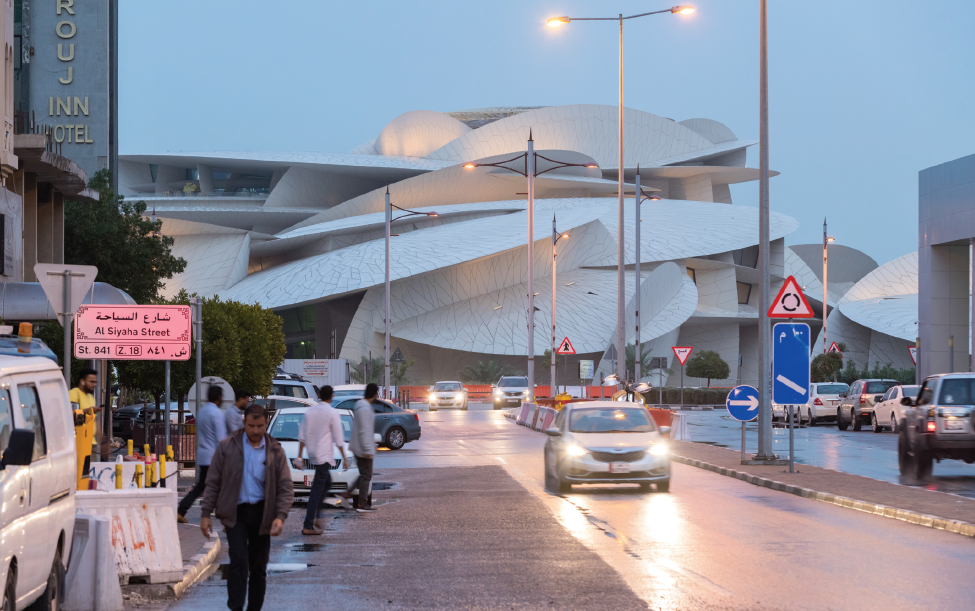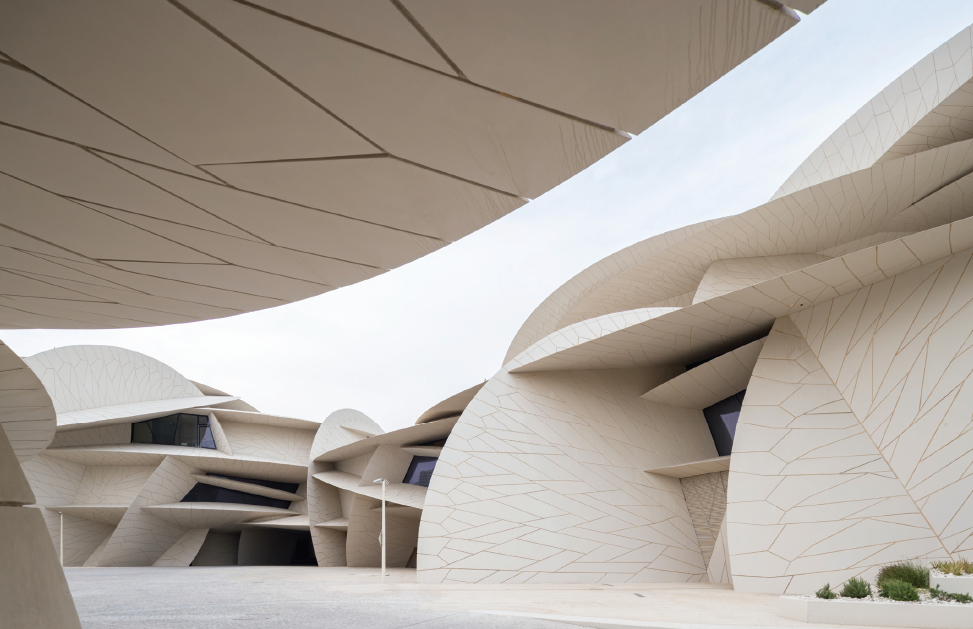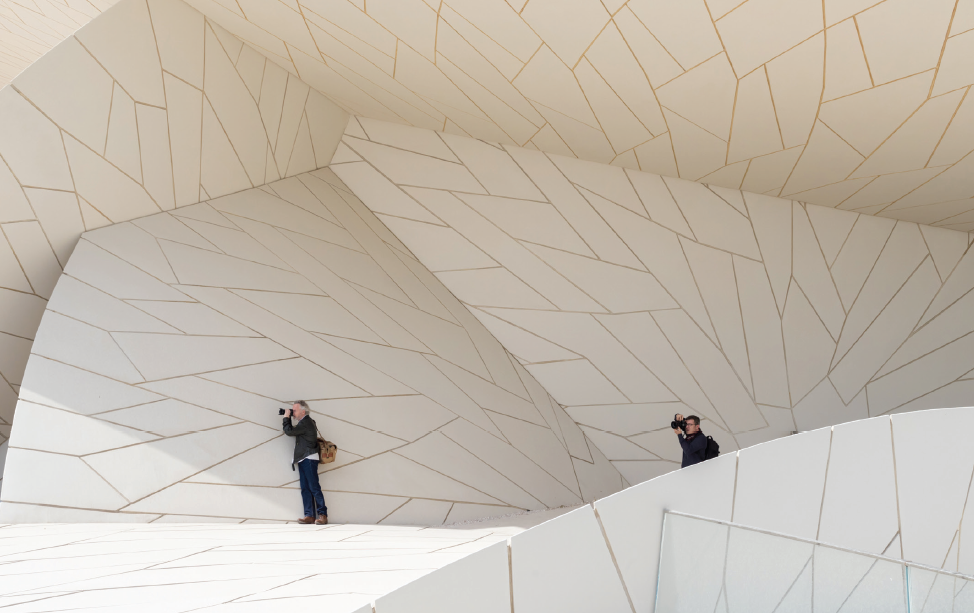Qatar National Museum
The National Museum of Qatar takes shape within the area that includes the Royal Palace of Sheikh Abdullah bin Jassim Al Thani—an important structure from the 20th century—emerging from a desert that stretches all the way to the sea. Dedicated to the history of Qatar, the museum symbolically evokes the desert, its silent and infinite dimension, as well as the spirit of modernity and courage that can shake what seems unshakeable. Jean Nouvel believed that the building he designed should reflect three different stories and historical periods.
The first story, which spans a long period, covers the peninsula and its inhabitants; the second explores the discovery of the pearl industry along with coastal and desert lifestyles; and the third tells of the momentum that gave the kingdom the power and prosperity we associate with it today, achieved over just a few decades.
The design of the building is inspired by a mineral formation commonly found in the deserts of the Gulf region—the desert rose. The desert rose, a flower-like mineral crystal, forms only in arid coastal areas, shaped by wind movement, sea spray, and sand over thousands of years, creating an astonishingly complex and poetic architectural structure crafted by nature itself. The desert rose form evokes Qatar’s culture and climate; it seems to rise from the ground and merge with it. The sand-colored glass fiber-reinforced concrete façade blends harmoniously with the local environment. The structure is composed of interlocking circular discs of varying diameters and curvatures. The interlocking composition of the discs, visible from the outside, continues in the interior spaces with neutral and monochromatic finishes.
The floors use sand-colored polished concrete with mineral aggregate; the vertical walls feature stuc-pierre, a traditional stone-effect plaster made from a mixture of gypsum and lime. The ceilings are covered with a micro-perforated sprayed acoustic plaster applied over mineral wool. The museum provides a slightly rising and falling elliptical walking experience, evoking the natural undulations of the landscape. Large openings offer views of Baraha, the museum gardens, and Doha Bay. Permanent exhibitions focusing on Qatar’s environmental, cultural, and political history from past to present are displayed across eleven galleries. As visitors move through different volumes, they can never predict what awaits them architecturally at the next step. In this design full of contrasts, visitors can pass from a high, enclosed space formed by the intersection of an inclined disc to a much lower space. This creates a dynamic and exciting structure.
The visitors’ journey ends in the restored historical palace, one of the jewels of the National Museum of Qatar (NMoQ) collection. The building, with high energy efficiency, holds a USGBC LEED Gold certification and a GSAS 4-Star rating.
The discs that form the structure also act as sunshades. The shadows created by the projections allow visitors to walk around the building while protecting the interior from light and heat. The spaces between the discs create thermal mass, reducing cooling loads. The building uses state-of-the-art heating and cooling systems. The windows, which are few in number, are designed to avoid direct sunlight, aiming for efficient climate control of the interiors.
The museum is surrounded by a park that reinterprets the Qatari landscape, inspired by low sand dunes, water-covered fields, salt flats (sabkha), and oases. The park includes only local plant and tree species, telling the story of Qatar and how its people lived and interacted with their land in a harsh environment. The garden, made up of traditional plants, also includes wide grassy areas where visitors can spend time in the evenings. A parking area with a capacity of 430 vehicles is integrated into the park.



Content: Tasarım Group


